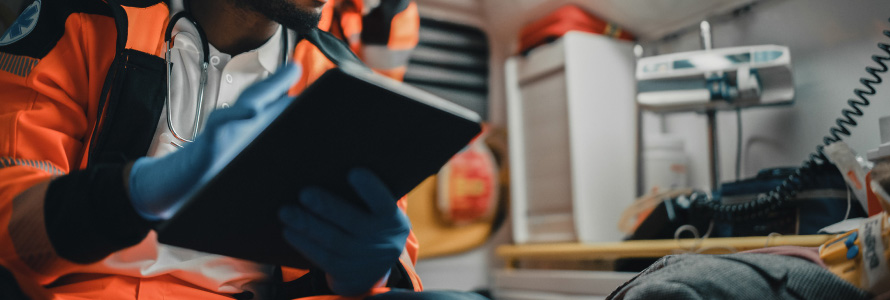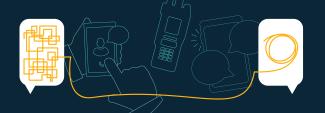The COVID-19 pandemic has shifted how and when people access healthcare. Concerns about contracting the virus in medical facilities has meant that many patients are foregoing doctor’s visits.
In fact, the Centers for Disease Control and Prevention (CDC) estimated that 41% of adults in the United States had delayed or avoided medical care in 2020, including treatment for urgent emergencies, because of concerns related to COVID-19. Those who did seek care were often sicker than if they had followed more standard access to healthcare processes. In response, healthcare entities had to reinvent routine procedures to minimize potential exposure for both providers and patients. This included the adoption of telehealth practices in order to bring needed care into the homes of patients.
Telehealth has offered many advantages for both patients and healthcare workers throughout the pandemic. Patients are able to connect with their providers in real-time and address their medical needs in a safe setting. And healthcare staff are able to minimize the risk of contracting COVID-19 by meeting with patients virtually, only bringing them into a healthcare facility when needed.
With the widespread adoption of telehealth services, the First Responder Network Authority (FirstNet Authority) Public Safety Advisory Committee (PSAC) Telehealth Strike Team felt that revisiting the topic was a valuable task.
Telehealth in a Pre-Hospital Environment
The PSAC Telehealth Strike Team was originally stood up to examine new applications of telehealth, particularly as they related to the ET3 (Emergency Triage, Treat, and Transport) pilot program run by the Center for Medicare and Medicaid Innovation.
With the pandemic, the FirstNet Authority PSAC Telehealth Strike Team worked to identify current uses of telehealth in the prehospital environment. The Strike Team developed a web-based survey for EMS providers involved in the delivery of care in this realm – from those answering the calls to the medical professionals participating in telehealth conversations.
Survey responses provided a comprehensive view as to how telehealth has been implemented around the nation. From these results, the Strike Team developed the following case studies to provide ideas on how to implement or expand the use of the telehealth platform in local systems. These use cases demonstrate the ways that telehealth can address patients’ concerns about COVID-19 and improve the efficiency of available resources during everyday operations.
A 78-year-old female called 9-1-1 indicating that she was feeling ill. On arrival, the paramedics made their assessment and discovered that the patient had been missing two of her daily home medications as the prescriptions had run out a few days prior. The patient indicated that she actually felt “fine” right now but was worried what might happen if she continued to be without medications. She was unable to secure a ride to her normal physician’s office for medication refill or to the pharmacy for pickup. Because there was no immediate medical emergency, the lead paramedic initiated a telemedicine consult. Through discussion with a nurse practitioner, the patient, and a family member who arrived at the home, an electronic prescription was initiated. While still live on video with the patient, the physician contacted her regular physician’s office and arranged an appointment and transportation for later that week. The family member was able to retrieve the pickup and delivery of the medication in a sufficient quantity to hold the patient until she was able to see her normal physician later that week.
A 56-year-old man had been diagnosed with COVID-19 14 days ago. He had been doing well so far with home care, although over the past four days he experienced a gradual worsening in shortness of breath with chest pain and a fever. His wife was concerned and called 9-1-1 to request EMS support. The patient did not want an assessment by paramedics and adamantly did not want to go to the hospital. The EMS crew was concerned when they found the patient had a very rapid heart rate, low oxygen saturations, visible difficulty breathing, and difficulty with his ability to walk. They established a telehealth session using their broadband-enabled tablet with the patient’s consent. The session included both an on-duty physician at the local hospital and their supervisor who was responding to assist them on the scene. The physician established a dialog with the patient and his wife, assisting the paramedic with a more detailed assessment and evaluation. Throughout the consult, the physician relayed his concerns for the patient’s prognosis from the findings of the assessment. Because of this, the patient eventually agreed to be transported to the hospital. He was found to have bilateral pulmonary emboli, resulting in an immediate aggressive treatment plan and admission. Several days later he was discharged home without any ongoing effects from what would have likely been a fatal condition without the appropriate interventions.
EMS was presented with a 32-year-old male suffering from acute use/intoxication of multiple substances. He was exceptionally agitated and uncooperative with the efforts of law enforcement and EMS to de-escalate the situation. He flailed violently, exhibiting threatening behavior toward the providers attempting to examine and evaluate him. He also had injuries from an incident that happened prior to public safety arrival. The lead paramedic initiated a telehealth video consult with their local medical control physician via a secure audio-video application to assist with assessment of the patient. Through this guided approach to ensuring safety of the patient, the physician was able to provide direction regarding the administration of medications to calm the patient and assist the paramedic crew with ongoing monitoring and securing of the patient for transport. As a result, the patient was successfully transported to the hospital for further care without any additional injury to the patient or public safety personnel.
EMS crews responded to a motor vehicle collision on a rural section of the interstate highway. While responding, they received information from their dispatch that the telematics system in the vehicle indicated that it had overturned several times at a high rate of speed, the lone occupant was wearing a seat belt, and all airbag systems had deployed, but dispatchers were unable to establish any voice communication with the victim. Upon arrival, EMS located an adult male outside of the vehicle with an apparent arm fracture and a variety of contusions and abrasions. He had a full recollection of the incident and was able to self-extricate from the vehicle. Based on the pre-arrival information, EMS had activated an aeromedical scene response, but the helicopter was still nearly 30 minutes from the scene. During a secondary assessment in the ambulance, the patient noted some abdominal pain. The paramedic established a telehealth consult with a physician at the regional trauma center and utilized a portable ultrasound device to complete a focused abdominal sonography in trauma (FAST) assessment. As the trauma physician could both see the live ultrasound feed and consult directly with the paramedic and the patient, it was determined that the pain was not resulting from a significant abdominal injury and the patient could be seen at a local emergency department less than 15 minutes from the scene. The helicopter response was cancelled, and the patient was appropriately treated and transported by EMS.
Each of these use cases demonstrates the various ways in which telehealth can be used to save lives, streamline medical services, and ensure quality patient care. With the ongoing impact of the COVID-19 pandemic and its variants on our nation’s healthcare systems and communications networks, it is essential that healthcare providers — particularly EMS crews and emergency departments — look for unique and innovative means to integrate technology, such as telehealth, into daily operations to ensure the appropriate use of scarce resources.
Telehealth services are another area where FirstNet can help public safety do their job better, safer, and faster in emergencies and on a daily basis. The FirstNet Authority PSAC appreciates the opportunity to take a critical look at this emerging issue and technology.




















